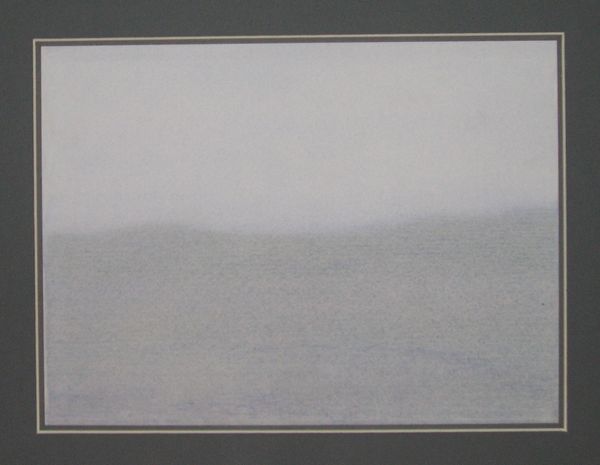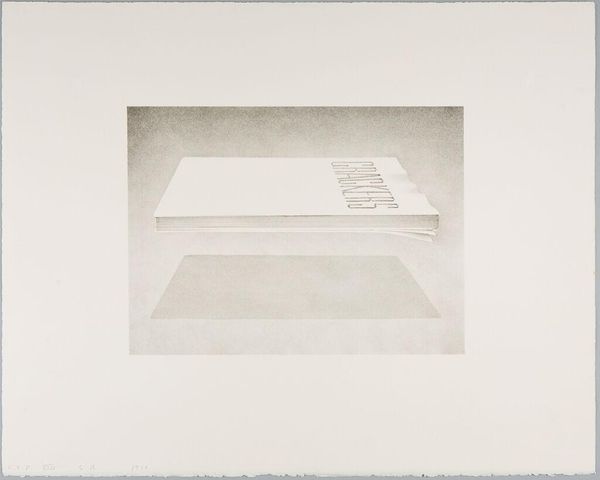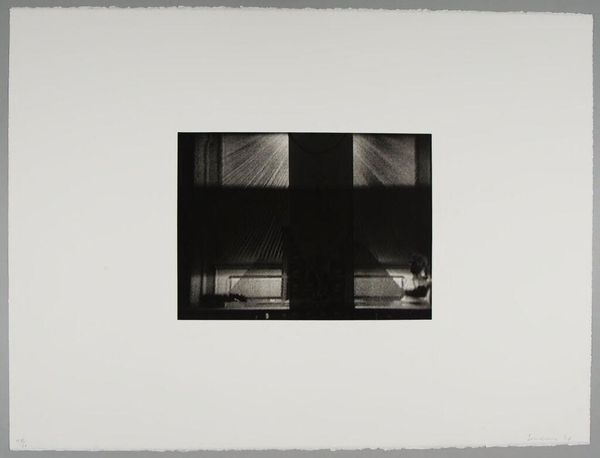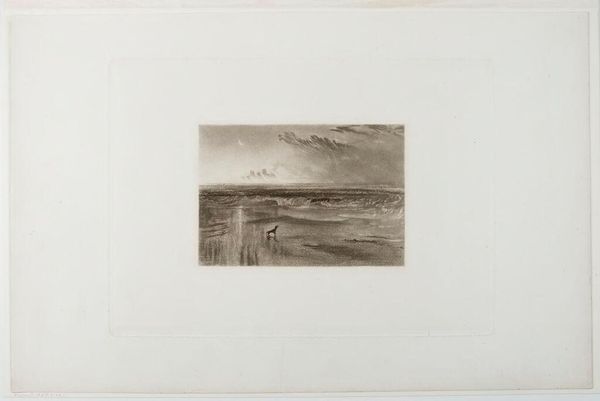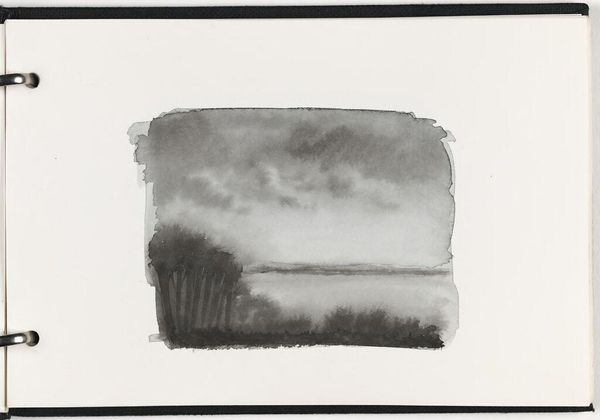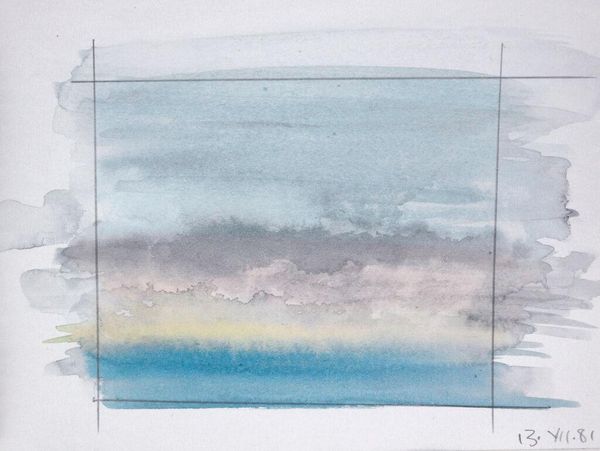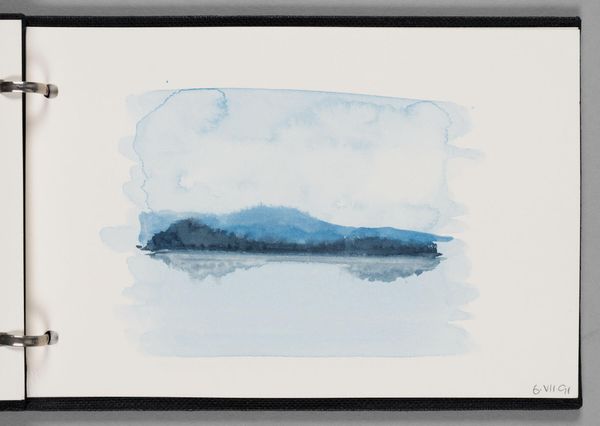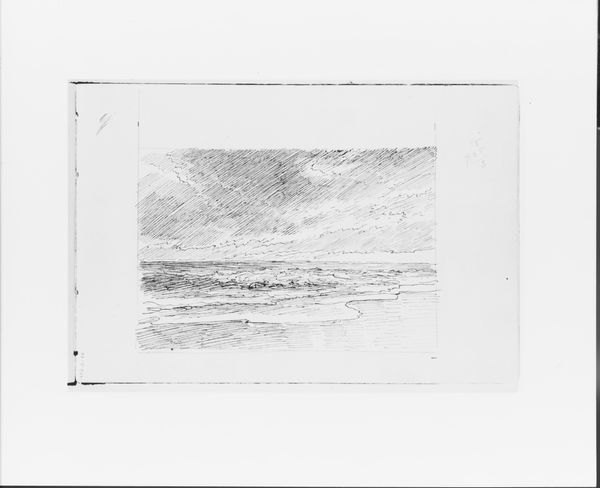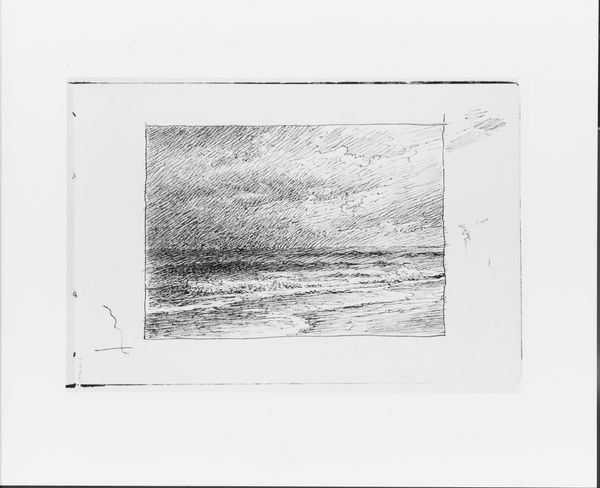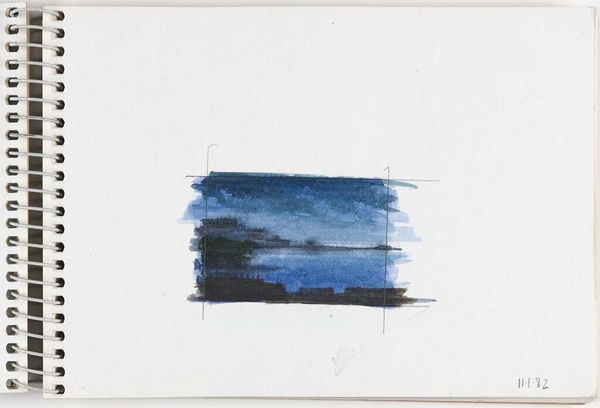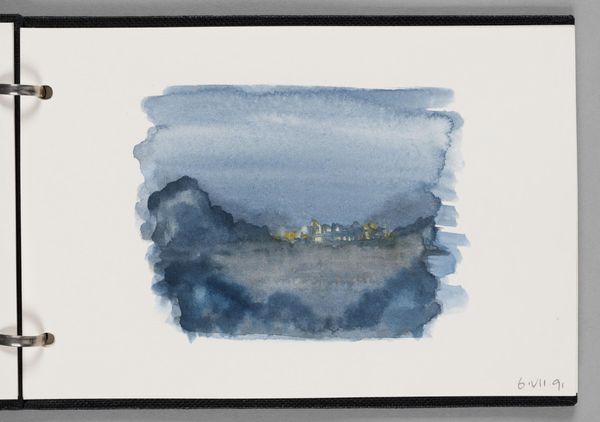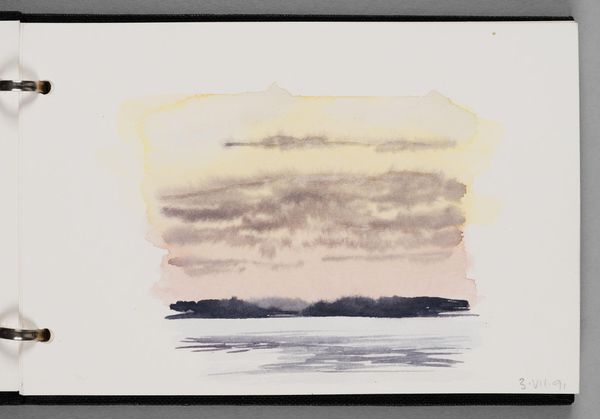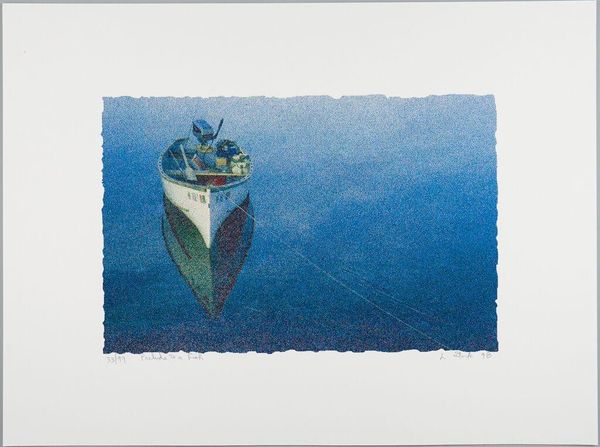
painting, watercolor
#
abstract expressionism
#
painting
#
landscape
#
watercolor
#
acrylic on canvas
#
cityscape
#
modernism
#
watercolor
#
realism
Copyright: Clarence Holbrook Carter,Fair Use
Curator: Clarence Holbrook Carter's watercolor, “On the Great Lakes,” completed in 1953, captures a seemingly serene, yet subtly unsettling waterscape. What are your initial thoughts? Editor: It’s a curious composition; the immediate effect is of restraint, despite the tumultuous sky. The artist limits the palette to mainly blues, whites, and browns, creating an oddly balanced image. Curator: Restraint is a powerful descriptor. Carter painted this work during a time when anxieties about industrial progress and environmental degradation were surfacing. The Great Lakes, once symbols of American prosperity and expansion, were already facing significant pollution. Do you think that the painting conveys a tension related to this shift? Editor: Absolutely. The careful construction of the railing, dividing the lower register of the deck, and the vastness beyond—it's a formal push and pull. Note how Carter balances the stormy, active sky with the more static water. It creates an inherent unease. Curator: And what about the ship itself as a symbol? Waterways represented pathways of both progress and exploitation, carrying goods and people, but also pollutants and invasive species. The artist seems aware of the complexities that modern transit introduces to this landscape. Editor: I see that tension reflected in the artist's rendering of form. Carter doesn't fully commit to pure realism or abstraction. There is an intriguing space in-between. The horizon, where sky and water meet, lacks definition, a pictorial gesture which suggests both physical and cognitive boundaries are blurring or breaking down. Curator: Perhaps this visual ambiguity mirrored the social uncertainties of the time. It acknowledges the ecological cost of advancement but offers no easy resolution. The scene is framed, in effect, by industrial elements—the deck. Is that enough of a suggestion, or do you wish there were clearer critical elements? Editor: Ambiguity itself can be the critical point! Carter lets viewers grapple with that precarious balance. It’s not didactic; it presents a problem and invites contemplation through form, line, and color. Curator: Exactly. This is an important example for our contemporary viewers, who are even more aware of their agency, perhaps, with regard to waterways. Editor: Indeed, reflecting on the work, the subtle discord speaks volumes about the artist's astute, if subtle, critique of our relationship with the environment.
Comments
No comments
Be the first to comment and join the conversation on the ultimate creative platform.
